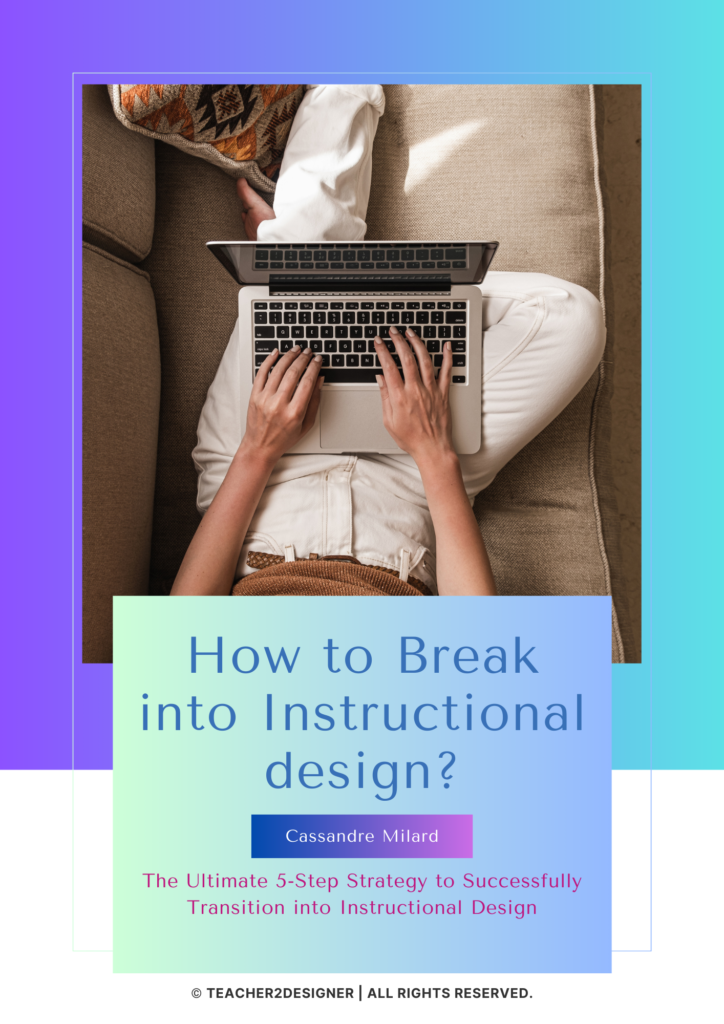It can be an exciting and fulfilling journey if you’re considering moving from teaching to becoming an instructional designer. This transition can offer new avenues for professional growth and allow you to make a more significant impact. While the goals of both roles are similar, there are also some differences in the skills and perspectives needed.
Understanding the Role of an Instructional Designer:
Before diving into the transition process, it’s essential to understand instructional design. Instructional designers play a crucial role in creating effective and engaging learning experiences. They analyze learner needs, design instructional materials, and employ various strategies to enhance learning. Unlike teaching, instructional design involves a more systematic and strategic approach to curriculum development and delivery.
Assessing Transferable Skills:
As a teacher, you already possess many transferable skills that can be leveraged in instructional design. These include strong communication skills, understanding of learner needs, classroom management expertise, and a deep knowledge of educational content. Identify these skills and recognize how they can be applied in a new context.
Investing in Professional Development:
To successfully transition to instructional design, consider investing in professional development opportunities. Attend workshops, webinars, and conferences focused on instructional design principles, e-learning technologies, and learning management systems. Acquiring new skills in multimedia design, project management, and adult learning theories will enhance your effectiveness as an instructional designer.
Building a Strong Educational Technology Foundation:
Instructional design often involves integrating technology into the learning experience. Familiarize yourself with popular educational technologies, authoring tools, and learning management systems. Gain hands-on experience in creating digital content, interactive modules, and assessments. This technological proficiency will set you apart as a well-rounded instructional designer.
Networking and Seeking Mentors:
Connect with professionals in the instructional design field to expand your network. Seek out mentors who have successfully transitioned from teaching to instructional design. Their insights and advice can be invaluable as you navigate the challenges and opportunities associated with the new role.
Showcasing Your Portfolio:
Assemble a comprehensive portfolio highlighting your teaching experience, instructional materials you’ve developed, and any technology integration projects. Emphasize your ability to design effective learning experiences and showcase your adaptability to different teaching environments. A well-curated portfolio will be a powerful tool when applying for instructional design positions.
Updating Your Resume and LinkedIn Profile:
Craft a resume and LinkedIn profile emphasizing the skills and experiences relevant to instructional design. Highlight your ability to analyze learner needs, design curriculum, and integrate technology into the learning process. Use keywords commonly associated with instructional design to increase your visibility to potential employers.
Seeking Entry-Level Opportunities:
When transitioning to instructional design, be open to entry-level positions that allow you to gain practical experience. Look for instructional design assistant, e-learning coordinator, or curriculum developer roles. As you build your expertise, these positions provide a stepping stone to more advanced roles.
Transitioning from teaching to instructional design is an exciting journey that requires dedication, continuous learning, and adaptability. By leveraging your existing skills, investing in professional development, and networking with professionals in the field, you can successfully make the shift and contribute to creating innovative and compelling learning experiences. Embrace the challenges and opportunities of this transition, and you’ll find a fulfilling career path that aligns with your passion for education.

Ready To Jump Into Your Transition?
Here is how I can help 🙂
- Grab a copy of my free e-book: If you are new to instructional design or eLearning, this guide will direct you through the initial steps in preparation for your exit plan.
- Book a 1:1 Call : Do you need help navigating your skillset or career development? Schedule a call to discuss your current situation, goals, and how to bridge the gap between them.
- Join the Teacher2Designer Accelerator Program: Looking to learn instructional design, master eLearning development, and build your portfolio with Articulate Storyline? Our program offers personal support and feedback to guide through this transition.




